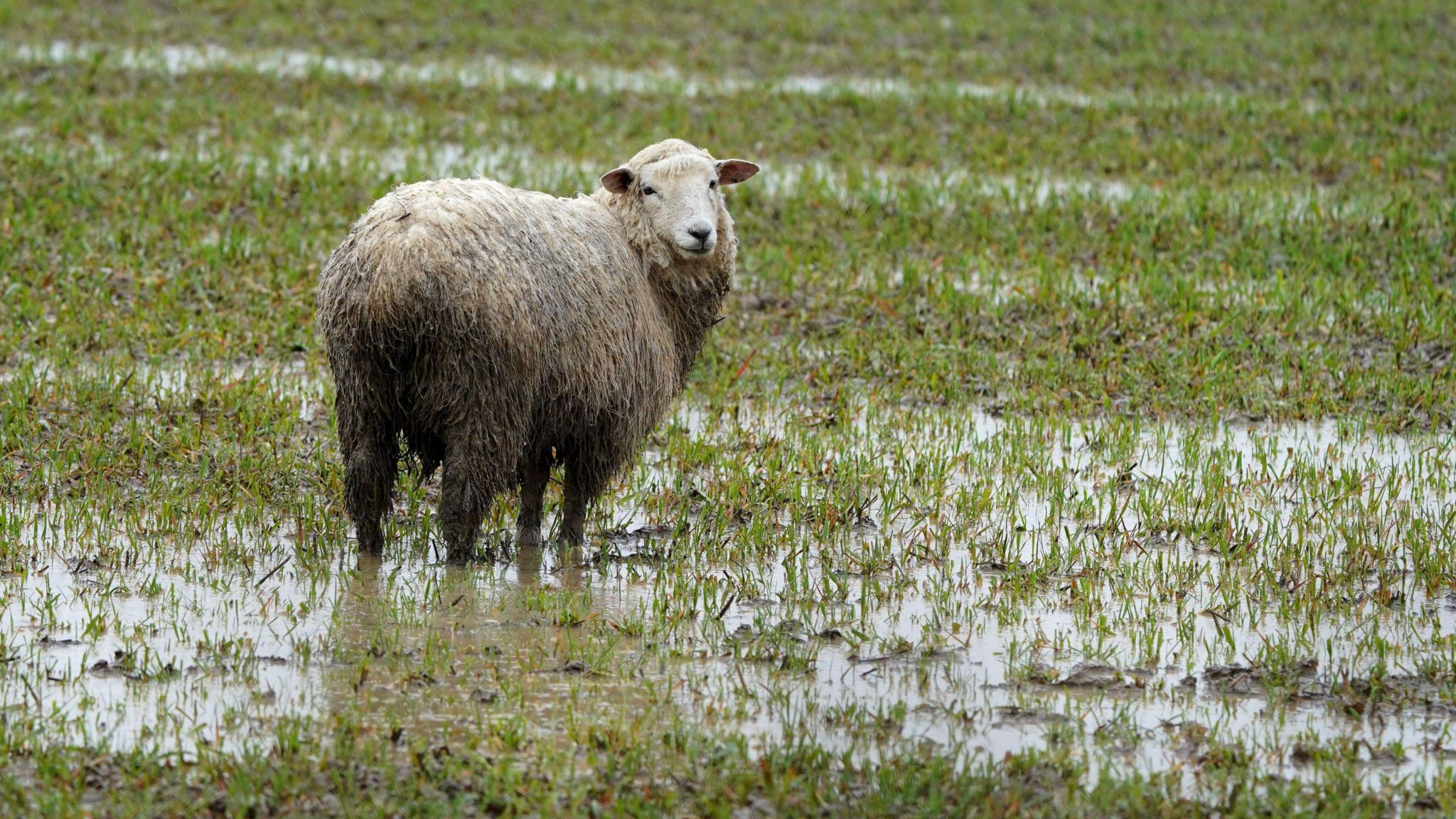Bad weather hits farming and food prices

- Published
Recent extreme weather in the United Kingdom and across Europe has left shoppers facing soaring food prices, and raised questions over long-term food security.
After one of the wettest winters on record, and a wet start to spring, many UK farmers are dealing with flooded fields and waterlogged ground.
This has hindered planting of winter and spring crops, with knock-on implications for the yield and quality of produce such as grains and vegetables.
The National Farmers Union have said the flooding and extreme weather linked to climate change could undermine UK food production unless farmers get more help.
Farmer Darren Moulding digs channels to try to disperse standing water at Brooker Farms in Kent
Flooded fields in the UK
Speaking to BBC Radio Kent, Romney Marsh farmer Andrew Cragg said, “I’ve been farming for 44 years and I’ve never experienced anything like this. It’s been so wet for so long."
Mr Cragg said that seeds are being planted six weeks late due to the wet ground, and this will mean yield will be down.
The increased frequency of extreme weather events has also meant he has had to make huge investments in new machinery to be able to drill seeds and harvest crops more efficiently.
It’s not only arable farmers that have faced problems: livestock health is also under threat.
The National Farmers' Union described weather and ground conditions for both lambing and calving season in Wales as extremely challenging. Animals that would usually be out grazing have been kept indoors for much longer, “challenging reserves of fodder and straw”.
Low water levels at Guadalteba reservoir in Campillos, southern Spain
Drought in Europe affecting imports
Simultaneously, some countries across Europe have been grappling with severe drought.
Countries such as Spain and Italy, traditionally major suppliers of fruits and vegetables to the UK, are experiencing water shortages and usage limitations leading to diminished yields and smaller harvests.
In Spain, a source of a significant portion of the UK's fresh produce, reservoir levels in eastern parts of the country have plummeted to alarming lows following several years with little meaningful rainfall.
This has resulted in reduced cultivation of crops such as tomatoes and cucumbers, leading to a drop in supply and a surge in prices for these items in UK supermarkets.
The combined effect of flooded fields in the UK and drought in continental Europe is seeing the cost of other groceries to rise too. Bread and pasta, for example, have experienced price hikes, placing a strain on household budgets.
What does the future hold?
Climate change is projected to increase the frequency and intensity of extreme weather events, further threatening food production systems globally. The Intergovernmental Panel on Climate Change, external says that food security will be increasingly affected by projected future climate change.
It predicts that up to 183 million additional people could be put at risk of hunger compared to a world without climate change.
In a bid to adapt and sustain UK food production, farmers are finding innovative ways to cope, such as storing crops for longer or turning some fields into wetland habitats.
Research centres across the UK are also at the forefront of pioneering efforts to develop crops resilient to floods, droughts and heatwaves.
At the James Hutton Institute in Dundee, scientists are studying how to improve the flood resilience of crops. Through innovative breeding techniques and genetic modification, researchers are identifying traits that enable crops to withstand prolonged periods of waterlogging and submersion.
Meanwhile, at Rothamsted Research in Hertfordshire, efforts have begun to develop heat tolerant crop varieties capable of maintaining optimal growth under higher temperatures.
- Published11 April
- Published11 April